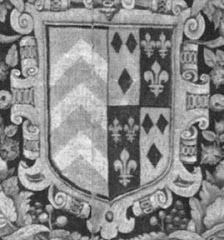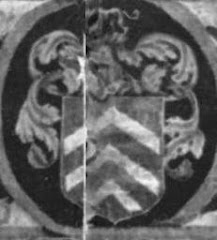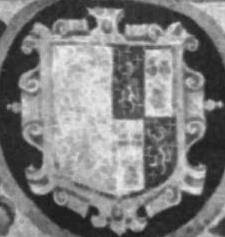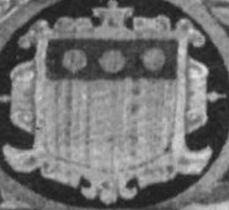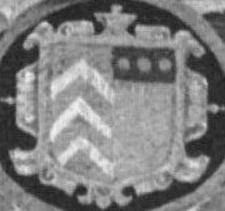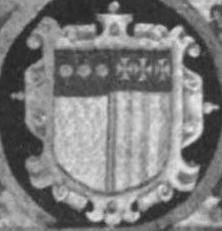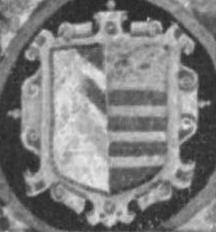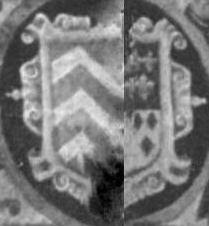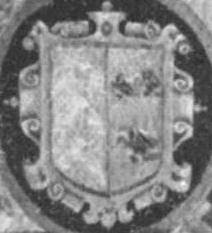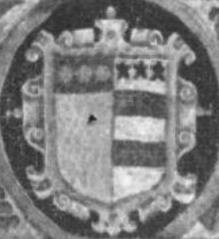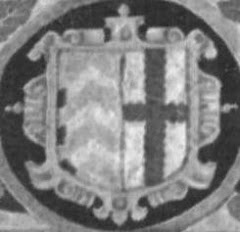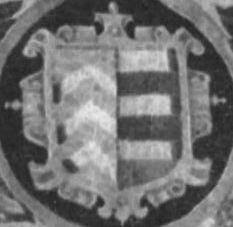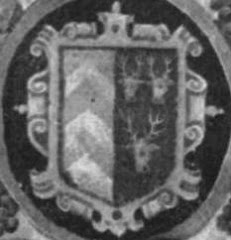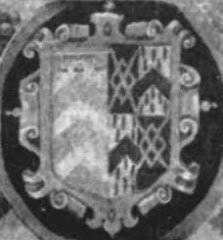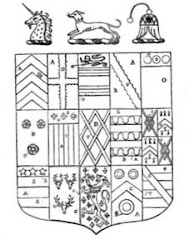READER WRITES IN
WITH INTERESTING GENEALOGICAL INFORMATION
There
exist several references which connect the Lewknors and the Blounts. One
Captain James Blount is known to have settled in North Carolina
James, and his father, another James, are mentioned in several English family wills as “being overseas” and may be identified as James, the eldest son of James, the eldest son of Thomas Blount of Astley, Worcestershire.
Capt James Blount, the immigrant, impaled the Clare arms of his mother with that of the Blount family. Barry nebulee of six, or and sa. For BLOUNT; impaled with Or. Three chevronels (tinct not known) possibly for LEWKNOR (but if gules, for CLARE).
Dexter on the shield is a bizarre interpretation of Blount. It is believed that the crest is the sun in splendour, charged with a sabaton or sollaret, broader at the toe than at the heel, as was the fashion in the sixteenth century, as seen on various Blount of Kinlet tombs.
Sinister was believed to be Clare – understandable as, with the tinct being unknown, the Clare arms are also three chevronels, but the crest of the Clares is a stags head, while the crest on the sinister side of the American shield is a unicorn.
The only combination of chevrons with a unicorn crest thus far found is Lewknor, as per Burke’s The General Armory ofEngland Scotland Ireland
Lewknor (West Dean, co. Sussex and co. Worcester) Az, three chev. Ar. (another, or.)
Crest 1: a greyhound courant ar. Collared or.
Crest 2: a unicorn’s head erazed az.bezantie, horned and maned or.
(other sources give the same information)
Upon looking for Lewknors who might be associated with the Blounts of Astley, it was found that Eleanor, daughter of Sir Christopher Brome, was married to the second of three Richard Lewknors of West Dean, while her sister, Bridget, was married to Thomas Blount of Astley, grand-father of Captain James of the “Coat of Arms”. As unreliable as the rules of heraldry can be, especially when transferred to the colonies, it can be supposed that the sinister side of the arms shows a Lewkenor marriage. Could it be, perhaps, that this was a West Dean Lewknor?
The first Richard of West Dean, Sir Richard Lewknor 1541-1616 was Chief Justice of Chester and Deputy President of the Council of Wales. He was buried originally atLudlow
I mentioned in one of my postings below, the four daughters of Sir Roger Lewknor d 1543 – Jane, Katherine, Mabel and Constance. Gillian drew my attention to one thread of connecting evidence lay in the Lewkenor Carpet of Arms which was bequeathed to Sir John Lewknor of West Dean (described as “head of the family” in Phillimore’s Sussex Heraldry) byConstance .
Constance’s first husband was Thomas Foster of Newnam, Worcestershire which I
suspect is Newnham Bridge, Lindridge, making her next-door neighbour to the
Blounts of Soddington, distant cousins, but living a mere ten miles away from
their fellow catholics, the Blounts of Astley. The carpet is now in the New
York Metropolitan Museum of Art.
It may be noted that the bottom middle arms shows a greyhound crest .
So, from the above, one surmises that the greyhound crest would have been associated with the senior line, which died out withConstance
in 1634. She bequeathed the carpet to Sir John Lewkenor of West Dean,
descendant of the first Sir Richard of West Dean, second son of Edmund Lewkenor
of Fyning who died in 1544, completely by-passing the descendants Edmund’s
first son, Thomas Lewkenor Esq, 1538-96, of Selsey, and his sons: Sir Lewes
1565-?1626 (husband of Mary Blount of Dedisham). Richard, (will probated 1605),
Samuel baptised 1571 (married Jane Hopton of Shropshire ),
and Thomas (who might have been married to Mary of Ludlow).
Can it be that Sir Lewes might have used the unicorn crest of the Dallingridges of Bodiam Castle, from whom both branches are descended, while Sir Richard continued to use the greyhound crest? Anybody out there got any ideas???
James, and his father, another James, are mentioned in several English family wills as “being overseas” and may be identified as James, the eldest son of James, the eldest son of Thomas Blount of Astley, Worcestershire.
Capt James Blount, the immigrant, impaled the Clare arms of his mother with that of the Blount family. Barry nebulee of six, or and sa. For BLOUNT; impaled with Or. Three chevronels (tinct not known) possibly for LEWKNOR (but if gules, for CLARE).
Dexter on the shield is a bizarre interpretation of Blount. It is believed that the crest is the sun in splendour, charged with a sabaton or sollaret, broader at the toe than at the heel, as was the fashion in the sixteenth century, as seen on various Blount of Kinlet tombs.
Sinister was believed to be Clare – understandable as, with the tinct being unknown, the Clare arms are also three chevronels, but the crest of the Clares is a stags head, while the crest on the sinister side of the American shield is a unicorn.
The only combination of chevrons with a unicorn crest thus far found is Lewknor, as per Burke’s The General Armory of
Lewknor (West Dean, co. Sussex and co. Worcester) Az, three chev. Ar. (another, or.)
Crest 1: a greyhound courant ar. Collared or.
Crest 2: a unicorn’s head erazed az.bezantie, horned and maned or.
(other sources give the same information)
Upon looking for Lewknors who might be associated with the Blounts of Astley, it was found that Eleanor, daughter of Sir Christopher Brome, was married to the second of three Richard Lewknors of West Dean, while her sister, Bridget, was married to Thomas Blount of Astley, grand-father of Captain James of the “Coat of Arms”. As unreliable as the rules of heraldry can be, especially when transferred to the colonies, it can be supposed that the sinister side of the arms shows a Lewkenor marriage. Could it be, perhaps, that this was a West Dean Lewknor?
The first Richard of West Dean, Sir Richard Lewknor 1541-1616 was Chief Justice of Chester and Deputy President of the Council of Wales. He was buried originally at
I mentioned in one of my postings below, the four daughters of Sir Roger Lewknor d 1543 – Jane, Katherine, Mabel and Constance. Gillian drew my attention to one thread of connecting evidence lay in the Lewkenor Carpet of Arms which was bequeathed to Sir John Lewknor of West Dean (described as “head of the family” in Phillimore’s Sussex Heraldry) by
It may be noted that the bottom middle arms shows a greyhound crest .
So, from the above, one surmises that the greyhound crest would have been associated with the senior line, which died out with
Can it be that Sir Lewes might have used the unicorn crest of the Dallingridges of Bodiam Castle, from whom both branches are descended, while Sir Richard continued to use the greyhound crest? Anybody out there got any ideas???




